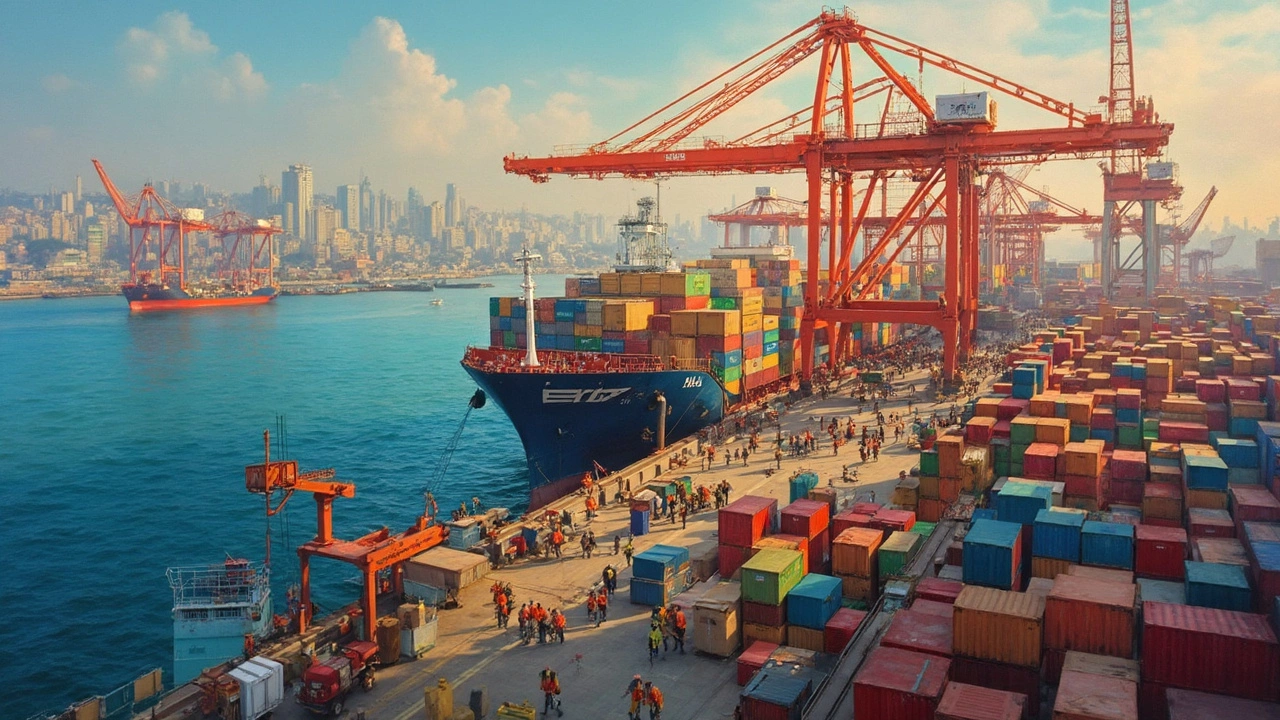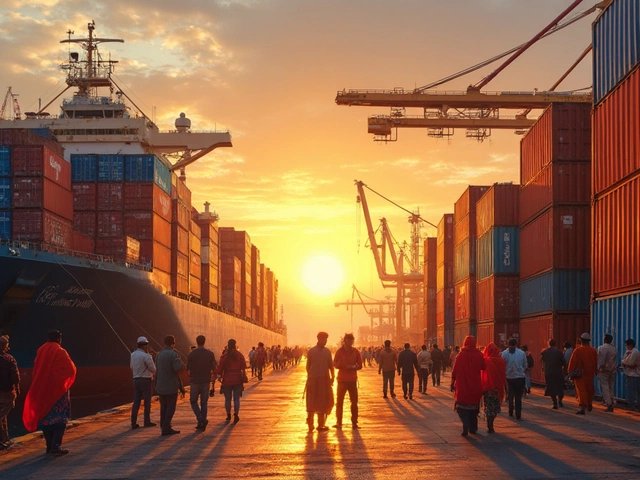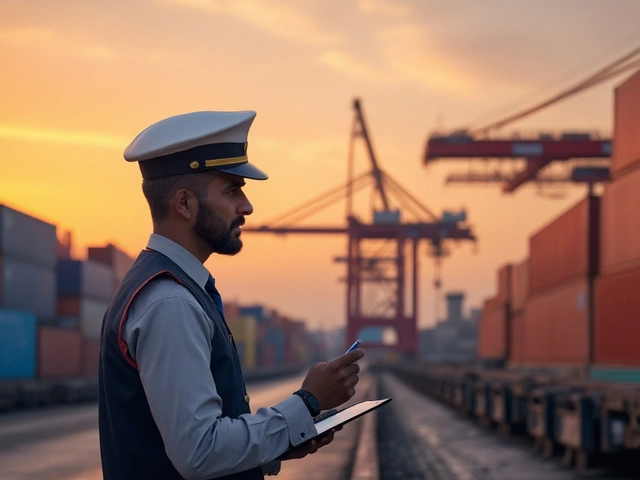International shipping might sound like a giant maze if you're not familiar with it, but fear not! We've got some solid tips to help you navigate through it smoothly. First off, let's talk about how to choose the right shipping method. Did you know that about 90% of the world's goods are transported by sea? That's right! So, if you're shipping massive quantities or something heavy, sea freight might be your best bet. It's usually cheaper than air freight, though it takes longer.
But hey, if you're dealing with something that needs to get there ASAP, air freight is your pal. It's speedy but can be more expensive. There's also a nifty balance for smaller packages with services like express couriers—think of them as your shipping superheroes when you're in a pinch!
- Choosing the Right Shipping Method
- Understanding Customs and Duties
- Technology and Tracking
- Cost-Saving Tips
Choosing the Right Shipping Method
Picking the right shipping method can make or break your international shipping game. Let's kick it off with sea freight. If you're shipping hefty quantities or bulky items, sea freight is often your go-to. It's way cheaper compared to air but takes longer to reach the destination—think weeks, not days. This method dominates global trade, handling about 90% of international goods movement, so you're in good company.
Now, on to air freight. It's like the express lane of international shipping. Ideal for time-sensitive deliveries or high-value goods, it's quick but comes with a bigger price tag. Imagine sending the latest smartphone models on release day—speed is crucial here. If you've got a package that absolutely must reach a customer quickly, air freight is your friend.
For smaller shipments, express couriers like FedEx, DHL, or UPS are lifesavers. They offer door-to-door service, so there's no hassle about how it'll reach its final destination. Plus, these courier services often provide tracking, giving peace of mind because you know exactly where your shipment is at any time.
Let's not forget about rail and road options, particularly for neighboring countries or within large continents like Europe or North America. They offer a balance between cost and speed, especially if you're shipping within the same landmass. Rail might take a tad longer than road but it's more environmentally friendly—always a win!
Deciding on the best method isn't just about speed and cost. Consider your product's nature, your budget, and your customer's expectations. Matching these factors is key. If your e-commerce business ships handcrafted goods from Asia to Europe, balancing shipment cost with delivery speed is vital for maintaining profitability while keeping customers happy.
Understanding Customs and Duties
Alright, let's unravel the mystery of customs and duties. If you've ever felt puzzled about why your shipment got delayed, chances are it got stuck in customs. Understanding this process can save you a lot of headaches and keep your international shipping on track.
Customs is all about making sure goods that enter or exit a country follow local laws. When you tackle international shipping, you're bound to bump into customs duties, kind of like a tax on goods. These duties can vary massively depending on the country and the type of product you're shipping. For example, shipping electronics often comes with higher duties than clothing does.
So, how do you handle it like a pro? Start by understanding the Harmonized System (HS) codes. These are international codes that identify what you're shipping. They help determine duty rates and can save you from misclassifying your shipment. You definitely don't want unnecessary delays because of wrong codes.
Now, onto the paperwork! It's crucial to have all your customs documents ready. Typically, you'll need a commercial invoice, a bill of lading, and a packing list. Sometimes, a certificate of origin or special licenses might be required too, depending on what you're shipping and where. Pro tip: always double-check with your local customs office or a customs broker—they're lifesavers in complicated cases.
Here's a quick way to manage customs duties efficiently:
- Research duty rates for specific countries using online tools or contacting customs offices.
- Ensure your product descriptions are clear and consistent across all shipping documents.
- If in doubt, hire a seasoned customs broker to navigate tricky regulations.
And because numbers don't lie, here's a peek at average duty rates on various products across popular destinations:
| Country | Average Duty Rate | Key Products |
|---|---|---|
| United States | 1.6% | Textiles, electronics |
| European Union | 4.2% | Food, machinery |
| Australia | 5% | Apparel, electronics |
In short, understanding customs and duties is essential to keep your global trade efficient and smooth. Wrap your head around it early on, and you'll save time, money, and mental energy!
Technology and Tracking
Let's be real: trying to keep tabs on your shipments as they travel across the globe can feel like watching a pot on the verge of boiling. But thanks to modern technology, you don’t have to lose sleep over where your cargo is. Real-time tracking systems can save the day by giving you updates almost as they happen.
Once upon a time, you might have had to rely on emails or phone calls to find out where your goods were. Now, most companies offer online platforms or apps that give you real-time access to this info. For instance, big players like FedEx and UPS have robust systems that show you not just where your package is, but even its next stop.
A lot of these platforms use GPS and IoT (Internet of Things) devices. These little gadgets can be attached to shipments and provide up-to-the-minute location data. So, whether a shipment’s going across continents or just over the border, you're in the loop the whole time.
But here's the kicker—tracking isn’t just about keeping your peace of mind. It can also help you make quick decisions if something goes haywire. Say, if there's a delay due to a storm, you can plan around it or notify customers about a new delivery date. That’s the kind of customer service that keeps people coming back.
For added convenience, cloud-based platforms are super helpful. They let you access all your shipment details anytime, anywhere. Some systems even have AI elements that predict potential delays or issues based on historical data. This means you can anticipate and dodge potential problems before they hit.
And just for the data geeks out there, check this out:
| Device | Usage |
|---|---|
| GPS Trackers | Real-time location tracking |
| IoT Sensors | Temperature and humidity control |
Finally, when choosing a shipping company, see if their tech is up to snuff. It’s not just about moving boxes; it’s about knowing everything about those boxes from Point A to Point B. So go ahead, use international shipping tech to your advantage and make the process a whole lot smoother.
Cost-Saving Tips
When it comes to international shipping, keeping costs down while ensuring efficiency is key. Here's the lowdown on some practical ways to save money without compromising on service.
First up, consider consolidating shipments. By combining smaller packages into one larger shipment, you can often cut down on costs. It's like ordering a combo meal instead of separate sides—saves some bucks and is usually more efficient.
Also, watch out for those peak shipping times. If you're sending stuff during the busiest times of the year, like right before holidays, you might end up paying more. Shipping during off-peak times can make a real difference in your overall bill.
- Shop Around for Carriers: Don't just go with the first carrier that comes up in your search. Get quotes from multiple logistics providers to see who offers the best deal for your specific needs.
- Negotiate Tariffs: Believe it or not, there's flexibility in service charges. Traditional shippers often let you negotiate for better prices, especially if you're shipping regularly.
- Leverage Technology: Use shipping management software to analyze past shipping data. This can uncover patterns that help you optimize routes and negotiate better rates.
- Understand Duties and Taxes: Misunderstanding customs and duties can lead to unexpected costs. Know the basics and consider hiring a broker to help navigate the complex world of customs and duties.
Here's a fun fact to keep in mind: shipping by sea can be anywhere from 3 to 5 times cheaper than air freight! But remember, it's all about the balance between cost, time, and reliability, so choose wisely based on what matters most to your business.





